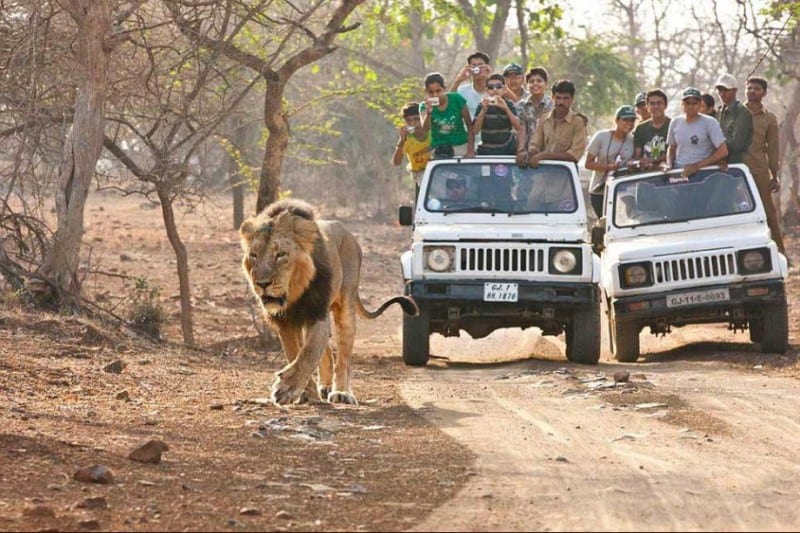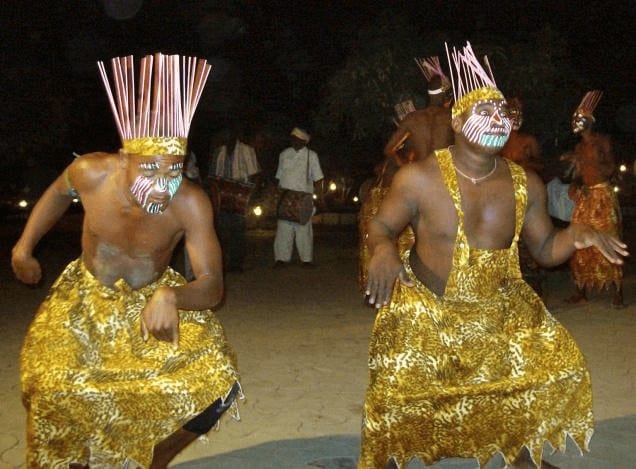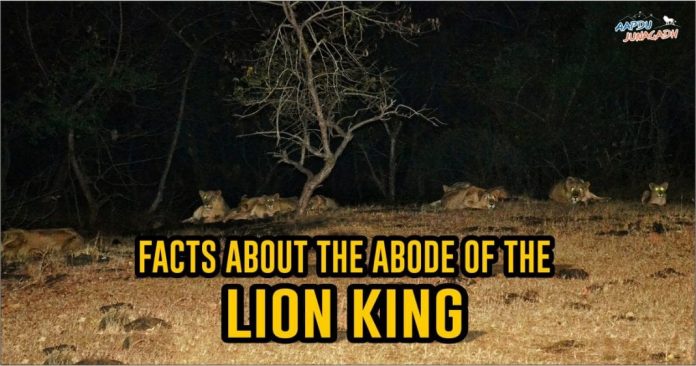When we introduce our city Junagadh to anyone who doesn’t know where it is or what is the importance of our city, we take pride in introducing it as the only place on Earth which is the home to the King of Jungle – Asiatic Lions! Facts about Lion king.
But not only the Lions, Gir is the natural habitat of a much wider range of Wildlife and tribal people which you might not be aware of.No worries, because we are here for the purpose of enlightening you about everything you need to know about Sasan Gir.
The History of Gir:
The Gir Forest National Park and Wildlife Sanctuary also known as “Sasan-Gir” and “Gir Van” is a forest and wildlife sanctuary and was established in 1965, with a total area of 1,412 km2 for the fully protected area of the National Park and 1,153 km2 for the Sanctuary.
 The forest area of Gir were the hunting grounds of the Nawab of Junagadh, but it faced a drastic drop in the lion population, so British viceroys brought to his attention the plight of the lions in Asia. His son, Nawab Muhammad Mahabat Khan III later assisted in the conservation of the lions whose population had dropped to only 20 through slaughter for trophy hunting.
The forest area of Gir were the hunting grounds of the Nawab of Junagadh, but it faced a drastic drop in the lion population, so British viceroys brought to his attention the plight of the lions in Asia. His son, Nawab Muhammad Mahabat Khan III later assisted in the conservation of the lions whose population had dropped to only 20 through slaughter for trophy hunting.
The sanctuary is the jewel of Gujarat’s ecological resources. The ecosystem of Gir, with its diverse flora and fauna, is protected as a result of the efforts of the government forest department, wildlife activists and NGOs.
 In 2015, the population has been 523. The population of lions in Junagadh District has been 268. There are 109 males, 201 females and 213 young/cubs.
In 2015, the population has been 523. The population of lions in Junagadh District has been 268. There are 109 males, 201 females and 213 young/cubs.
Water Reservoirs:
The seven major perennial rivers of the Gir region are Hiran, Shetrunji, Datardi, Shingoda, Machhundri, Godavari and Raval. The four reservoirs of the area are at four dams, one each on Hiran, Machhundri, Raval and Shingoda rivers, including the biggest reservoir in the area, the Kamleshwar Dam, which is widely known as ‘the lifeline of Gir’.
Wildlife:
The exotic flora of Gir National Park gives shelter to more than 200 species of birds and moreover the sanctuary has been declared an important bird area by the Indian Bird Conservation Network. Gir is also habitat of raptors like critically endangered white-backed and long-billed vultures.

The entire forest area of the Gir National Park is dry and deciduous which provides best habitat for Asiatic Lions. As per the new statics of 2015, the entire Saurashtra Region is inhabited by 523 Lions and more than 300 Leopards. Apart from these two animals the park is a home to two different species of Deer. The Sambar is counted largest Indian Deer. The Gir forest is also known for the Chowsingha – the world’s only four horned antelope. The Jackal, striped Hyena and India Fox are some of the smaller carnivores found in Gir Forest.

Reptiles: Sasan Gir is blessed with more than 40 species of reptiles and amphibians. Kamleshwar is the best spot where Marsh Crocodile can be seen in large numbers. Park has even many species of snake including King Kobra, the Russell’s viper, Saw-scaled viper and the Krait.

How the counting is carried out:
The Cat Women of Gir Forest’ counted 523 in 2015. The women who do the counting are of traditional Muslim tribes in neighbouring villages. There are over 40 women van raksha sahayaks, who seek only to protect the animals of the park. These women have worked hard to win cooperation not just from local villagers but also from Maldharis who live in the sanctuary. The lions are almost tame in the presence of these female guards.
Tribes and Culture:
Siddis:

African by origin, Indian by nationality with Gujarati as their language – the Siddi tribe lives in a village called Jambur in the heart of Gujarat. Located approximately 100 km from Junagadh, the village is surrounded by the forest of Gir. They do small jobs in the day and dance to the African tunes at night.They have completed 300 years in Gujarat and this is their fourth generation in Jambur. They were brought by Nawab’s Wife. According to them, the Nawab of Junagadh had once visited Africa where he fell in love with an African woman. They got married and she moved to India with him and brought a hundred slaves and since then they have been based in Gujarat only.
Maldharis:
Sasan Gir Sanctuary is a place of numerous human settlements called Maldhari. Maldhari are devoutly religious pastoral communities which has become an integral part of the Gir forests for over 125 years. They live in settlement called ‘nesdas’ inside the forests and are engaged in the occupation of cattle rearing.

The famous poem “Charan Kanya” by Jhaverchand Meghani showcases the bravery of the Charan people belonging to Maldhari Tribe.
If you know anything more than this, feel free to share with us in the Comment Box below!
Also Read : જૂનાગઢમાં કોરોનાથી પ્રથમ દર્દીનું મૃત્યુ! તા.3જી જૂન 11AM સુધીમાં જિલ્લાની કોરોનાની સ્થિતિ































